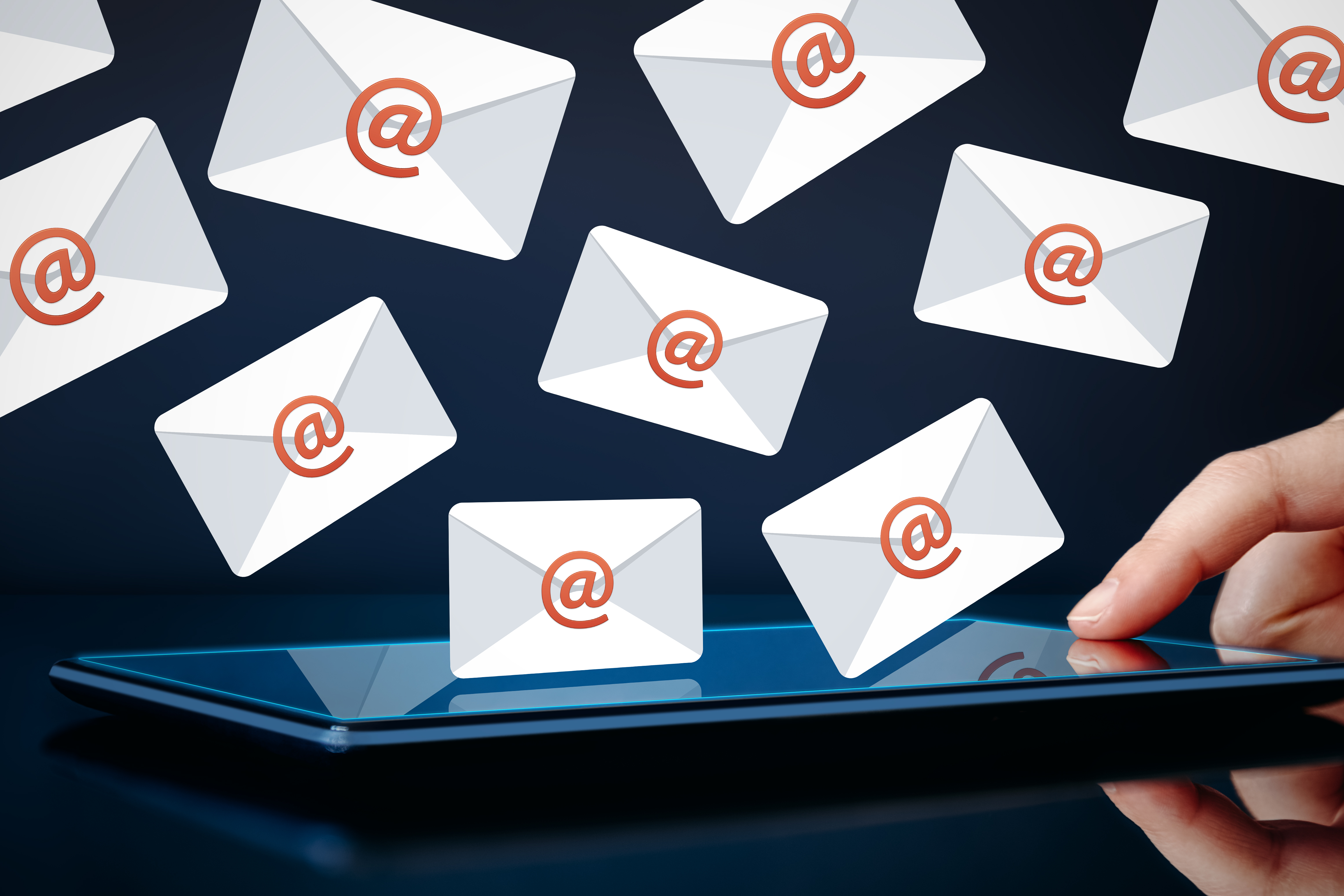September 17, 2019
 by Komal Helyer / September 17, 2019
by Komal Helyer / September 17, 2019

Email marketing is probably the most effective channel in terms of ROI.
With a 42:1 return on investment, who could argue? But guess what? If done better, the ROI could be even higher. But to do better, you need to understand what needs to be optimized. So, you need drive insight from a huge array of data points. However, as time-poor email marketers, we are often stuck in a rut of metric analysis: opens, clicks, unsubscribes, and so on.
There are plenty of email marketing campaign tips out there, and this article is gives you some of the most important ones: identifying the other key email marketing KPIs every email marketer should be analyzing to become the best. Imagine a world where your ROI is even bigger. Realizing the true potential of email marketing is crucial to your success.
The following list of email marketing metrics are the key things you need to measure in order to boost your ROI. Before going forward, make sure to see what email marketing software solutions are available to help boost your overall ROI as you keep track of the steps in this list.
Without healthy, growing email lists, the benefits you reap today may not be sustainable, which is why keeping a focus on your list growth is essential.
To calculate the rate at which your list is growing: (Number of new sign-ups – unsubscribes) divided by the total number on your list x 100.
Understanding the click-through rate (CTR), sometimes referred to as click-to-open-rate in email marketing, will help you identify the relevance of the email content to the people who have opened your email. This also helps you identify whether the creative needs optimizing. A decreasing click-to-open rate may mean that your content and email design needs work.
Example: You sent 970 total emails and 140 subscribers clicked on the link in them. 140/970 = .14433 multiply by 100 and you get a 14.4% email click-through rate.
There are a few key strategies you can employ to maximize click-through rate. To drive higher engagement in your emails and incentivize more clicks, try to keep the following tips in mind:
Avoid being long-winded or overcomplicating your writing in your emails. If you’re looking to gain as many clicks as possible, keep the focus of your emails on what is essential and the links that you want your readers to click. Over-saturation can distract your readers and take their focus away from your end goal.
Make sure that the action or click that you want your readers to make is clear to them. In order to get what you want out of your emails, you cannot rely on your readers to read between any lines or make assumptions as to what you want from them. Clearly outline the benefits that clicking on your links will provide and how important they are for both you and your readers.
Referencing the same link at multiple points in your email increases the chances that your readers who did not click on it at first can reconsider its appeal. This can be done by linking to your landing page at first in your email and then including a call-to-action button linking to the same page, or just referencing the page again in your email by emphasizing the value it could bring your reader.
A strong call-to-action button that attracts the attention of your readers is key to a high click-through rate. The call-to-action is the crucial element of your email where you can convert readers into customers. Making it impossible to miss, or better yet, click on, via appealing language and an exciting design can only help your click-through rate.
As mentioned earlier, list growth is essential. Many unengaged subscribers will fail to respond to your emails, others that don’t want to hear from you will hit the unsubscribe button. By measuring the unsubscribe rate, you will understand whether your emails are delivering the expectations to your audience.
Example: You sent 3,050 total emails and 112 subscribers decided to unsubscribe. 112/3,050 = .04 multiply by 100 and you get a 0.4% email unsubscribe rate.
There are a few key strategies you can employ to maximize click-through rate. To drive higher engagement in your emails and incentivize more clicks, try to keep the following tips in mind:
The more specific you can get with your emails, such as a getting started email for new subscribers or a special discount to reward subscribers who have been on your email list for years, the higher your chances that these subscribers will be pleased with your company’s presence in their inbox.
Demonstrating the value of your campaign via specific and relatable content proves your worth to your subscribers, and decreases the chance that they’ll unsubscribe from your emails.
If you want to keep your subscribers around, don’t send your emails on a whim. Develop a plan for exactly what value you want your subscribers to get out of each email. To keep subscribers engaged and wanting more of your content, you need to ensure that they understand the value each email provides.
More than half of all emails are opened via a mobile device, so it is essential that your emails are easy to read and look polished when your subscribers read them from their phones. To best cater to readability on a mobile device, create emails with a single column layout, use simple and concise language, use larger fonts to improve readability, and make sure your call-to-action buttons are able to populate on a mobile device as easily as they do on a desktop.
The unsubscribe rate will give you churn on a campaign by campaign basis, however understanding your list churn over time will give you a better indication of whether your email strategy needs some work.
To calculate list churn rate in the last 12 months: (Total number of email unsubscribes in 12 months divide by total number of subscribers) x 100
An open rate tells you how many opens you are getting on a campaign basis. But what you really want to know is how much of your database is engaged. Is it the same 20% that open on a regular basis or maybe there are different people opening across different campaigns. A reach allows you to understand how many people are you engaging over a period of time.
Example: You successfully delivered 2,020 total emails and 404 subscribers opened them. 404/2,020 = .2 multiply by 100 and you get a 20% email open rate.
You can't market to someone via email if they're not going to open it, which is why you need to do everything you can as a marketer to entice your audience. Here are a few ways to drive higher open rates:
The most obvious way to gain clicks on your email and improve your open rate is via catchy and enticing subject lines. Think of all the other emails in the inboxes of your subscribers that you’ll be competing with for clicks. Your subscribers only have so much time to look at email, and the subject line is your chance to stand out and prove to your subscribers that your brand is worth their time and attention.
Another way to boost your open rate is through personalizing your emails to appeal to individual subscribers. Grouping your recipients by demographics such as location, purchase history, or browsing activity can make your emails more effective and appealing to your readers. By tailoring your emails to specific readers, you can increase the relevance of your brand and offers to your readers, and in turn boost both your newsletter’s open and conversion rates.
Avoid being long-winded or overcomplicating your writing in your emails. If you’re looking to gain as many loyal subscribers as possible, keep the focus of your emails on what is essential and the takeaways you want your readers to have. Oversaturation can distract your readers and take their focus away from your end goal.
Do you wonder which links in your emails are most popular? Do emails with lots of links work? Does the audience just click on the top links? Are your calls to action performing as well as they could? Understanding the answers to these will allow you to identify where you can optimize and test.
Most email platforms will give you this report out of the box. If not then you will need to look at the number of clicks per link and overlay this onto your creative.
Email deliverability success is one of the most crucial aspects of your email strategy. If your emails are not being delivered all the rest of your hard work on content, creative etc will have gone to waste.
This will be a metric from your email marketing platform. It will tell you the number of emails actually delivered vs. the number sent.
Your hard bounce rate is indicative of a healthy list. The higher the bounce rate, the more the ISP will identify you as a poor sender, resulting in more of your emails hitting the junk folder. This is also a metric given by your email marketing platform. It will tell you how many emails were bad or invalid.
Example: You sent 981 emails and 11 of them were unsuccessfully delivered. 11/981 = .0112 multiply by 100 and you get a 1.12% email bounce rate.
Many aspects of email delivery are out of the control of the sender, however there are a few things you can do to ensure that your bounce rate stays as low as possible.
Build your lists with permission from your subscribers rather than just scraping them or buying them, and always ensure that your subscribers are making a conscious decision via checking a box or signing their name when they are signing up for your newsletter.
By having a higher percentage of subscribers who are invested in actually receiving your newsletter and are not just random email addresses, you’re increasing the chances that your emails will be delivered to real people that want to receive your content.
It’s tempting to gain a ton of email list sign-ups via special, appealing offers. Many subscribers will sign up for your email list solely to get a one-time offer without plans to continue to engage with your brand. Sometimes, these intentions can lead people to sign up with a fake email address. Be careful about how you are incentivizing subscribers to sign up for your newsletter and whether they have the intention of actually being on your email list.
Maintaining regular, consistent contact with your subscribers ensures that your list stays up-to-date. If you go months between emails, you run the risk of email addresses falling out of use. Keeping a consistent schedule of with your emails will ensure an up-to-date email list and a lower bounce rate.
Understanding your inbox placement rate will help you identify whether you are getting the optimum results from your email campaigns. There are many factors that impact your inbox placement, and analyzing this number first will help you identify whether you have a deeper problem.
Not all email marketing platforms will tell you your inbox placement. However, if your emails are not performing well, or there is a need to deliver more value from your campaigns, it's important to find a way of calculating this.
This is the number of people that have hit the SPAM button or junked your email. Even a tiny number of recipients doing this can have an impact on your sender reputation. This is the number of people that have complained vs. the number of emails delivered.
Post-click metric tracking is essential to measuring the true success of your campaign. To be honest, your boss will rarely care about the open rate or click rate – it is what they do after they click. The bounce rate shows you the percentage of people who leave your site after visiting only one page. If the bounce rate is high, then you know your audience are not interested in taking action.
Most ESPs won’t give you landing page metrics, so a good place to start is GA. Setting up landing page tracking in GA is simple, once signed in you will need to find your tracking ID and insert these into your landing page. Once complete the landing page reporting within GA will enable you to monitor a whole range of metrics.
Email is highly responsive. However, few marketers show these metrics in their reporting dashboards. High clicks, low conversions - you have a potential issue with your landing page. Low clicks, high conversion rate - you may have a potential issue with your data, your message, your offer and so on!
To calculate your email conversion rate, divide the number of subscribers that completed the email’s desired action by the number of successful email deliveries, and then multiply that quotient by 100 to find your conversion rate.
Example: You sent 970 total emails and 250 subscribers completed the desired action. 250/970 = .25773 multiply by 100 and you get a 25.8% email conversion rate.
If your email conversion rate is falling short of its desired performance, you may need to make some adjustments. Here are a few ways to improve your email conversion rate.
To keep your reader interested in your brand and convert them to your end goal, you’ll need to hold their attention and communicate the value of your email. An attention-catching subject line can help win a click from your subscribers over other emails in their inbox.
Grouping recipients by demographics such as location, purchase history, or browsing activity can make your emails more effective and appealing to your readers. By tailoring your emails to specific readers, you can increase the relevance of your brand and offers to your readers, and in term boost both your newsletter’s open and conversion rates.
More than half of all emails are opened on a mobile device, and you’ll want to make sure that the way you design your emails is easy to read and warrants a click from your subscribers, be it via computer, tablet, or phone. To optimize your emails for mobile readers, try using a single column layout, keeping your writing concise, using larger fonts to improve readability, and creating CTA buttons that can fit in and appear perfectly across multiple types of inboxes.
Keeping track of average order value helps your e-commerce business in a number of ways, including understanding your customers’ spending habits, informing your pricing strategy, and measuring the success of your marketing efforts.
To use AOV to measure marketing success, take a benchmark and see how this figure improves as a result of your efforts. It may cost you money to earn new customers but increasing average order value is normally inexpensive. It can often be achieved by tweaking tactics and won’t require a whole new campaign. What’s more, increasing average order value directly impacts your bottom line.
Average order value is an important e-commerce metric. It refers to the average amount that is spent in each transaction on your e-commerce website. To work out your average order value, simply divide your revenue by the number of orders you’ve received.
For example: If your site made £70,000 last month from 1400 orders, your average order value would be £70,000/1400 = £50.
Email marketing produces some of the highest ROI. It has a low cost to market and is easy to set up. Measuring the ROI allows you to prove the value of your email activity, whether the amount you spend on technology and time returns on this investment. It is one of the most important metrics board level to deliver a business case on further investment.
If you are looking to show ROI as a percentage: Total revenue – Total investment cost (Technology & Time spent) / by total investment cost x 100.
The old adage that it costs less to retain and grow a current customer than it does to acquire new rings true still today. In fact, it costs over five times more to acquire a new customer. The CLV gives you the why behind so many engagement initiatives. Engage and grow you will soon find your profit margins grow! Once you have understood your CLV, an objective would be to improve this year over year.
There are several ways to calculate your customer lifetime value, and this can often become really complex. Testing and understanding methodologies allows you to land on one that works for your business. Speak to your ESP about how they can help you discover the best way to get to this metric.
Recency, Frequency, and Monetary (or RFM) value allows you to understand your most valuable customers. This then gives you the insight to go and find more of them! Defining these segments is crucial to your business success.
Many a marketing professional will talk about the nudge effect of email marketing; however, how do you prove this to your business? Are your “unengaged” subscribers really unengaged? Should you remove them from your database?
Measuring your other marketing channels post-campaign will allow you to understand the correlations. A direct response channel email is almost an enemy to itself; if you can’t measure it, then did it not happen? If you applied this thinking, then you certainly wouldn’t spend on out of home, advertising, and so on.
Email marketing, as with any other channel, delivers much more than just the sale. It allows you to deliver on your brand story, keep customers engaged, and nudge recipients to take the next best action.
Interested in learning more about all things email marketing? Check out our resource hub with over 25 useful resources to keep you on your learning journey!
Komal leads the Pure360 marketing team, focusing on market positioning, market growth strategies, and customer lifecycle marketing. Komal has worked with some of the world's leading brands including HSBC, Carphone Warehouse, Black & Decker, and First Direct, helping them get the best results from their email and digital marketing. She sits on the DMA Email Council, the Chair of the Learning & Communications Hub and an awards judge including the DMA Awards & E-Commerce Awards.
Are you wondering how to measure your content marketing ROI?
 by Georgios Chasiotis
by Georgios Chasiotis
You can’t improve if you don’t measure.
 by James Eisner
by James Eisner
All successful e-commerce campaigns are data-driven.
 by Anastasia Stefanuk
by Anastasia Stefanuk
Are you wondering how to measure your content marketing ROI?
 by Georgios Chasiotis
by Georgios Chasiotis
You can’t improve if you don’t measure.
 by James Eisner
by James Eisner


